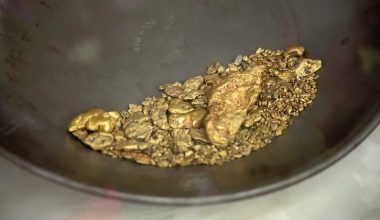Since ancient times, gold has been considered one of the most valuable metals in the world. From the time of the Egyptian pharaohs and the kings of ancient Mesopotamia, to the time of the Spanish conquistadors in the Americas, gold has been used as a form of wealth and power.
In addition to its monetary value, gold has also played an important role in the religion, culture and politics of ancient civilisations.
In this article, we will explore the historical importance of gold and its role in ancient civilisations.
The fascinating story behind the value of gold in antiquity: from religion to economic stability
Gold has been considered one of the world’s most valuable metals for centuries, and its value has been the subject of fascination and debate since antiquity. From religion to economic stability, gold has played an important role in many aspects of human society.
In ancient Mesopotamia and Egypt, gold was considered a sacred metal and was used in religious and funerary objects. Egyptian pharaohs were buried with large quantities of gold to ensure their passage to the afterlife.
In ancient Greece and Rome, gold was used as currency and minted into gold coins. The Romans also used it in jewellery and decoration.
In the Middle Ages, gold became a symbol of wealth and power. Kings and nobles used it in crowns and jewellery, while the Church used it in religious objects.
In modern times, gold has played an important role in economics and politics. During the Great Depression, many countries abandoned the gold standard in order to print more money and stimulate the economy.
Today, gold remains a symbol of wealth and is used in jewellery and decoration. It is also used in investment, as it is considered a safe way to store value in times of economic uncertainty.
In conclusion, the history of gold’s value is fascinating and full of symbolism and cultural significance. Although its value has changed over time, it remains a highly valued metal throughout the world.
Discover the secrets of goldsmithing in ancient civilisations: techniques and processes for working gold.
Goldsmithing in ancient civilisations was considered a sacred art. Craftsmen worked gold with great dexterity and skill, using techniques that have been passed down from generation to generation.
One of the most commonly used techniques was embossing, which consisted of hammering the gold onto a hard surface to create a relief on the piece. The technique of lost-wax casting was also used, which consisted of creating a wax mould in the desired shape and then casting the gold into the mould.
The Egyptians were one of the foremost civilisations in goldsmithing. They believed that gold was the skin of the gods and used it in the manufacture of jewellery and ritual objects. The Incas were also experts in goldsmithing, using techniques such as rolling and hammering to create pieces of great beauty.
Today, many of these techniques have been adapted and improved, but some of the traditional techniques are still used in goldsmithing. It is impressive to see how ancient civilisations managed to create such elaborate and detailed pieces with the resources they had at their disposal.
Goldsmithing is an art that has stood the test of time, and although technology has come a long way in jewellery making, the value and beauty of a handmade piece remains unparalleled.
Discover the value of gold and why it is such an important resource for the global economy.
Gold is a precious metal that has been valued for its rarity and beauty since ancient times. But it is not only prized for its aesthetic appeal, but also for its economic value. Gold has been used as currency for centuries and today it remains one of the safest and most profitable investments.
The value of gold is determined by supply and demand in the market. The higher the demand, the higher the price of gold. In addition, the value of gold is also affected by economic and political factors, such as inflation, interest rates and market stability.
Gold is a very important resource for the world economy because of its use in industry and jewellery, as well as in investment and store of value. Many countries hold gold reserves as a way of hedging against inflation and currency depreciation.
In addition, gold is also used as a measure of international value, as its price is quoted in US dollars and used as a benchmark in international trade transactions.
In short, gold is a valuable and essential resource for the world economy because of its intrinsic value, its use in industry and jewellery, and its role as a store of value and measure of international value.
Despite its economic importance, gold remains a controversial issue in terms of mining and extraction, raising ethical and environmental questions. It is important to continue to reflect on how we can balance the need for resources with sustainability and social responsibility.
Discovering the value and uses of gold in ancient history
Gold has been valued since ancient times for its beauty and rarity.
The ancient Egyptians considered it the metal of the gods and used it to decorate temples and funerary objects.
In ancient Greece, gold was a symbol of wealth and power. Kings and nobles used it to make jewellery and art objects.
In ancient Rome, gold was used as currency and a symbol of social status.
In the Americas, pre-Columbian cultures used gold to make jewellery and religious objects.
Today, gold remains a valuable metal and is used in jewellery, electronics and medicine.
In addition, gold has been an important element in human history and has been the subject of conflicts and wars.
In short, the value of gold has transcended time and has been used in a variety of ways throughout history.
Unravelling the mysteries of gold’s origin: How did this precious metal form?
Gold has been one of the most prized metals by humans since ancient times, but how did this precious metal form?
The most widely accepted theory is that gold was formed in the universe through nucleosynthesis, the process by which heavier elements are created from nuclear fusion inside stars. When stars die and explode in supernovae, the elements that formed inside them, including gold, are released.
Gold can also be formed by collisions between neutron stars, where an explosion occurs and a large amount of elements are released. It is thought that this collision may have been responsible for much of the gold in the universe.
On Earth, gold is found in mineral deposits such as quartz and pyrite. These deposits were formed millions of years ago when the minerals precipitated into aqueous solutions underground. Gold can also be found in rivers and streams, where it has been eroded from the surrounding rocks and deposited in the riverbed.
Although much is known about the origin of gold, much remains to be discovered. Science continues to investigate the mysteries behind the formation of this precious metal.
The fascination with gold has endured throughout history and continues to this day. Its rarity and beauty make it an object of desire for many, but it is also an important element in modern industry and technology.
What other secrets lie behind the origin of gold, and what new discoveries will be made in the future about this precious metal?
In conclusion, gold has been one of the most valuable raw materials in the history of mankind, playing a key role in the formation and development of various ancient civilisations around the world.
Its beauty, rarity and durability have made it a symbol of wealth and power throughout the ages, and its use in jewellery and coinage has been central to trade and economics.
We hope you have enjoyed this article and learned a little more about the fascinating history of gold – see you next time!

